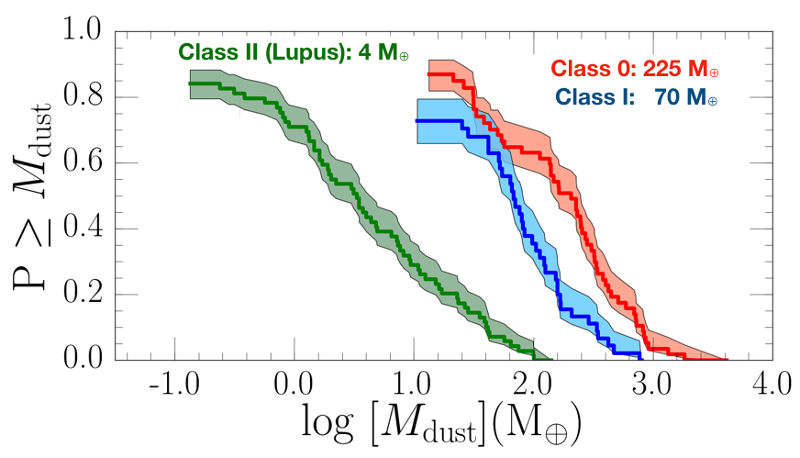| EPoS Contribution |
|
Evolutionary Trend in Dust Masses of Embedded Disks Captured by VLA
Lukasz Tychoniec Leiden U, Leiden, NL | |
| How dust masses of protoplanetary disks evolve over time and what the mass reservoir available for planet formation is are eminent questions in star formation. The VLA Nascent Disk and Multiplicity Survey targeted all known protostars in the Perseus molecular cloud in Ka-band (8 mm and 1 cm), and C-band (4 cm and 6.4 cm). We use the Ka-band data to estimate masses of the very young embedded disks in Perseus. The C-band data are used to correct for any free-free emission contribution to the radio flux. We find that the median mass of the Class 0 disks (225 MEarth) is 3 times higher than the Class I (70 MEarth), assuming the same dust temperatures of 30 K. We extend this result to compare with recent ALMA surveys of Class II disks that yield average mass from 5 to 15 MEarth. This suggests that grain growth can occur rapidly in the disk evolution process and that planet formation may be already ongoing in Class 0 disks. The decrease in observed dust mass can then be explained by grains being locked up in such large particles that they are no longer seen at cm wavelengths. The pebbles available in those early stages are the basis of forming giant planet cores. | |
 | |
| Caption: Figure caption: Decreasing trend in dust mass of disks from Class 0 to Class II is shown. Cumulative distributions of disk masses for Class II disks in the Lupus region (Ansdell et al. 2016) are shown in green, and for Perseus protostars in red (Class 0) and blue (Class I). Median masses are denoted. | |
| Collaborators: J. Tobin, OU, US and the VANDAM team |
Suggested Session:
Protostellar disks |

